Class Events
Minireunion 2018: Train excursion through the Canadian Rockies
by John and Dottie Evans
Eileen and Bam Alling, Mimi and Jon McBride, Heather and Chuck Post, Dottie and John Evans and Avi Nelson (’63) met in Seattle on July 11, 2018, to tour the city and kickoff the class trip to Canada.
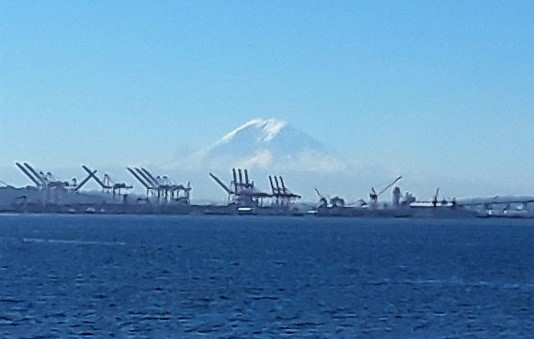
We were blessed with spectacular weather, not a cloud in the sky, and, for once, Mt. Rainier was clearly visible. The local cry is: “The Mountain is Out!” Seattle is normally shrouded in clouds even though the Olympic Mountains take out most of the rainfall. Mt. Rainier, a dormant volcano rising above the Cascade Mountains, seems to be in isolation at 14,400 ft above sea level and is a fairly rare sight. The other mountains in that volcanic chain include Mt. Hood in Oregon, Mt. St. Helens (which erupted in 1980) and Mt. Baker nearer the Canadian border.
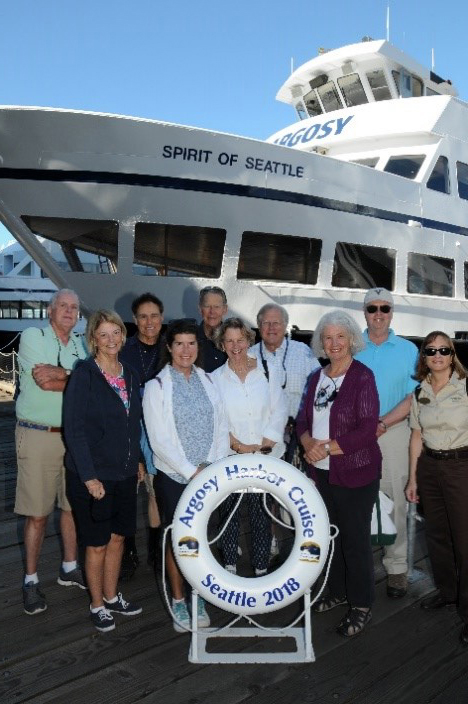
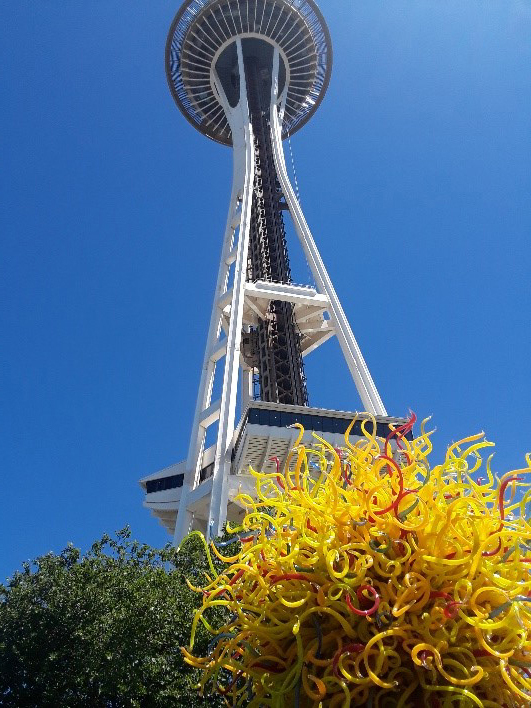
We spent the first day touring Seattle with our Collette guide, Ann Grier. A harbor cruise was followed by a visit to the Space Needle, which was built for the 1962 World’s Fair, and the neighboring Chihuly glass museum. Credit to Robert Whitby for introducing us to Chihuly and insisting that we include the Chihuly Museum on the tour. Unfortunately, Robert was unable to make the trip.
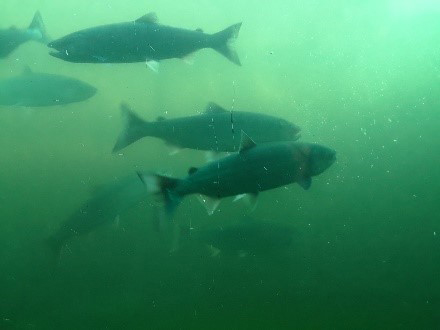
In the afternoon we toured the city with another local guide, Theresa. The highlight was seeing the salmon working up the fish ladder at the Ballard Locks (on the canal that links Lake Washington with Puget Sound). There is a glass viewing window where one can see the salmon in one of the pools of the ladder making the transition from salt water to fresh as they swim upstream to their spawning grounds. We learned that typically only 2 mature salmon will return to spawn out of 4000 eggs laid.
We had an excellent dinner at the Orpheo Restaurant where, unfortunately, our bus driver got a parking ticket.
On Friday we travelled by bus to Vancouver, stopping at the Boeing factory in Everett for a tour. This is the largest building in the world by enclosed volume and is the site of production for the 747, 767, 777, and 787 wide body aircraft. The tour was somewhat disappointing in its lack of technical information, the restricted distant viewpoints and the heavy dose of Boeing marketing (“If it’s not a Boeing, I’m not going”) but the scale of the operation is certainly impressive and we could appreciate the extensive and expensive tooling needed to assemble the parts of an airplane.
Crossing the border turned out to be a very simple affair. We arrived in Vancouver at the Marriot Delta Suites Hotel by late afternoon at which point Ann turned us over to Catherine Martin, our Colette guide for the balance of the trip. Here we were joined by the rest of the travelers: Beverly and Stuart Aisenbrey, Nancy and Mike Arons, Susan and Peter Bradford, Christy and Bill Manuel, Lesley and Roger McPeek, Pam and Quincy Rodgers, Susan French and Tom Rowe, and Eileen and Ted Wagner.
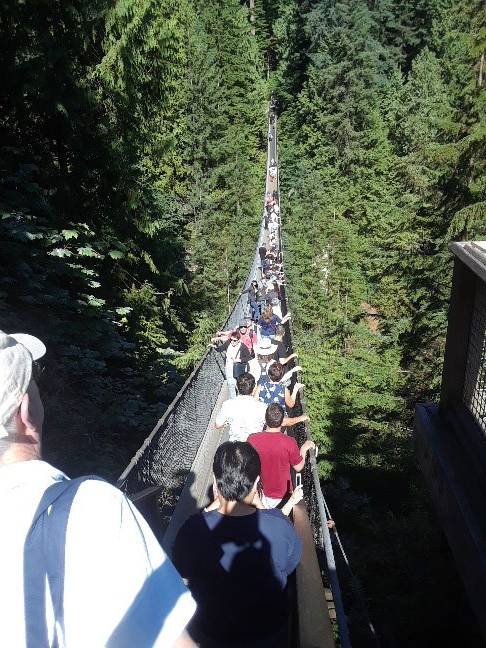
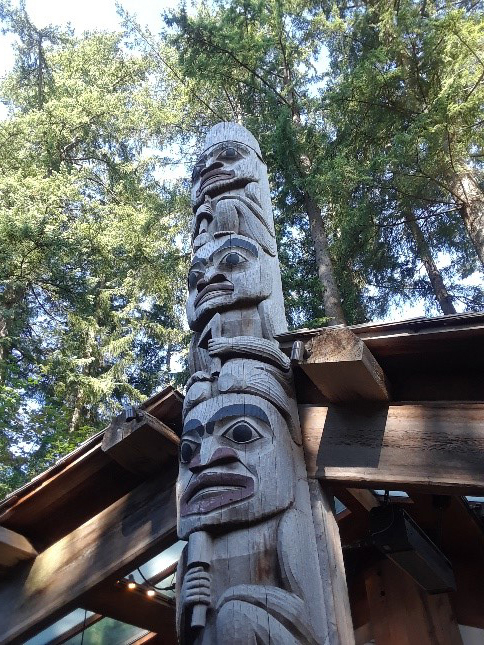
Our tour of the city of Vancouver started with a delicious group breakfast at the Capilano Suspension Bridge. After a briefing on the history of the local First Nation tribes and the subsequent European owners that built and maintained the bridge, we crossed the bridge with many other tourists. It was safe but very shaky! On the far side, we were briefed on the hemlocks, firs and cedars that make up the Pacific Coast Rain Forest. The Douglas firs were the largest of all and very impressive. A “skywalk” wound through the trees and tempted most of our group to explore the canopy.
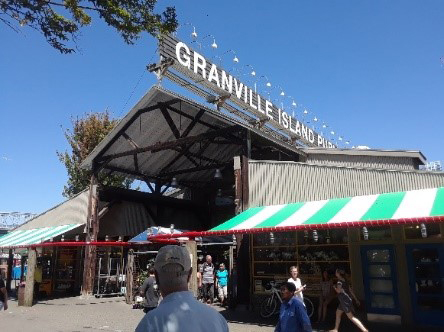
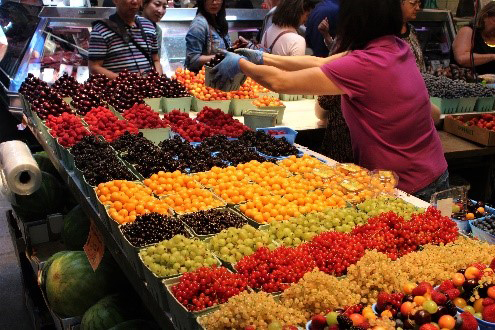
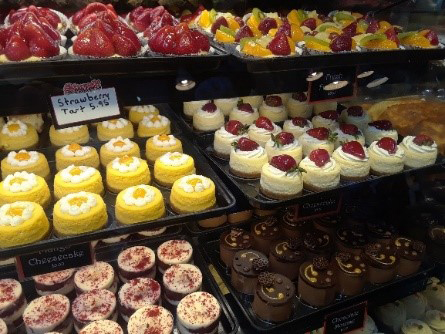
Returning to the bus, we drove around Stanley Park and then visited Granville Market, a huge farmer’s market selling meats and fresh produce and also prepared foods for lunch. Locals visit this market regularly by small ferries from the city as the traffic jams on the island are prohibitive for routine shopping.
Reboarding our bus, most continued through the city and back to our hotel. Bill Manuel and John Evans were dropped at the Vancouver Museum to see the First Nation collection and the history of Vancouver exhibit. The key takeaway from the museum visit was that from 1884 until 1955 the British colonial administration tried to stomp out Indian culture, forbidding tattooing and potlatches and placing the children in schools to turn them into European Christians. This effort failed and engendered a great deal of resentment on the part of the Indians. The current theme is Reconciliation and, from the exhibits, it seems they still have a long way to go. We saw many beautiful Haida (the local First Nation tribe) carvings made of argillite, a black slate found only in the Queen Charlotte Islands. These carvings were the basis of trade for the Haida tribe.
That evening we all had an elegant dinner at the Black+Blue Restaurant where we were seated on the balcony level. The meals throughout the trip were very good (credit to the Collette Travel Agency).
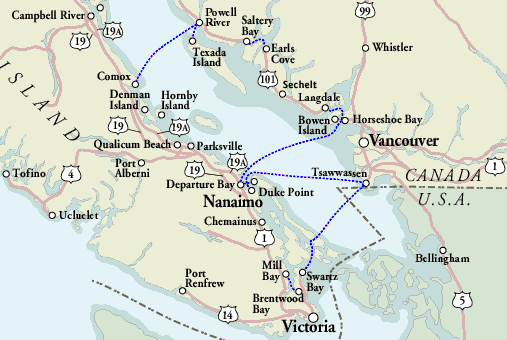
The next day, Sunday, we were up early and on the bus to the Tsawwassen ferry terminal where we caught the ferry to Swartz Bay on Vancouver Island, a 90 minute trip. The ferries are huge, holding three decks of buses, trucks and cars and upwards of 500 passengers. Happily, we discovered the Seaview Lounge which charged extra for admission but then provided a quiet space, a TV to watch the World Cup, and free appetizers and coffee.
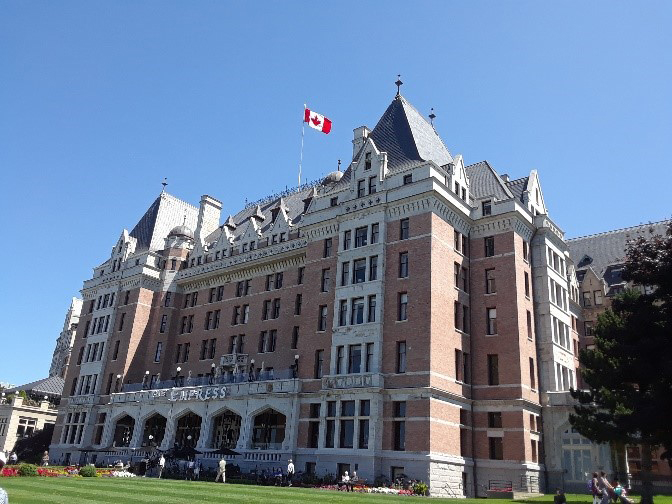
We reboarded our bus as we docked at Vancouver Island and were driven to the city of Victoria where we were dropped in front of the elegant Fairmont Empress Hotel. The Empress is the last of a chain of hotels built by the Canadian Pacific Railway from Quebec (Chateau Frontenac) through the Rockies (Banff Springs Hotel, Chateau Lake Louise) to the West Coast (Vancouver Hotel, Empress). These hotels are now properties of the Fairmont company but maintain the old-world elegance that the Canadian Pacific was striving to present as an attraction to draw train passengers. As one of the early principles (Van Horne) said, “If we can’t export the scenery we can import the tourists”.
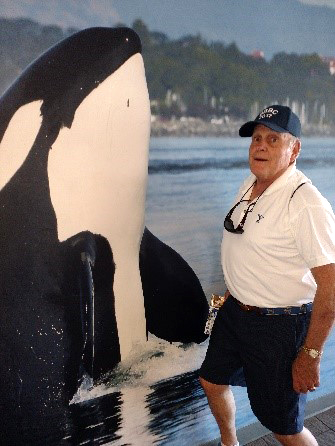
Having only two hours to explore, everyone split off in different directions. The McBrides and Evans walked a few blocks to see Beacon Hill Park where they saw peacocks, nesting blue herons and several kinds of ducks, a beautiful and peaceful spot. Avi made it into high tea at the Empress (which was supposedly sold out and rather expensive) while most of us had shrimp and avocado sandwiches at Sam’s Deli and Bistro. Many of our tour group enjoyed the fabulous nearby rose gardens on the hotel grounds.
Bam went on a (supposed) charter whale watch cruise and came back with pictures of Orcas including this one. (Most likely the Bam/Orca Encounter was another fish story.)
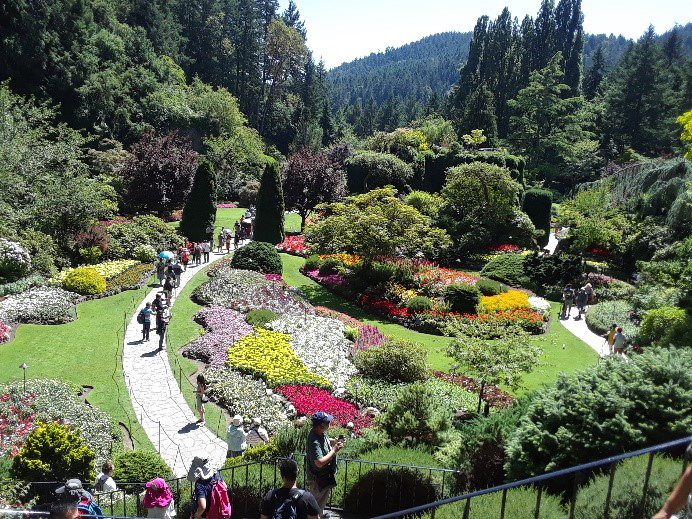
After lunch we again boarded the bus for travel to the famous Butchart Gardens. These fabulous gardens were laid out in an old limestone quarry by the wife of the owner once the quarry was exhausted. While the flowers and layout were fabulous, it was very hot and very crowded with huge numbers of tourists. Despite that it was a memorable experience. This iconic picture is of the Sunken Garden, the bottom of the quarry.
Returning by ferry we got some light snacks in the lounge and arrived at the hotel after 8 PM rather exhausted. Susan and Tom had enough energy to go off for a good dinner but most of us collapsed as we had to have bags out of our rooms by 6 AM the next day. On the bus by 6:50 AM, we were taken to the train station to board the Rocky Mountaineer Train for the two-day trip to Banff, stopping overnight at the town of Kamloops.
We all travelled by “Gold Leaf” service which gave us a vista dome car with a dining room below in the same car. There was breakfast and lunch served each day and the food was first-class. Credit to Chris Getman for his enthusiastic promotion of the Rocky Mountaineer Train which he has been on in the past. Sadly, Chris and Toddie were not able to be there.
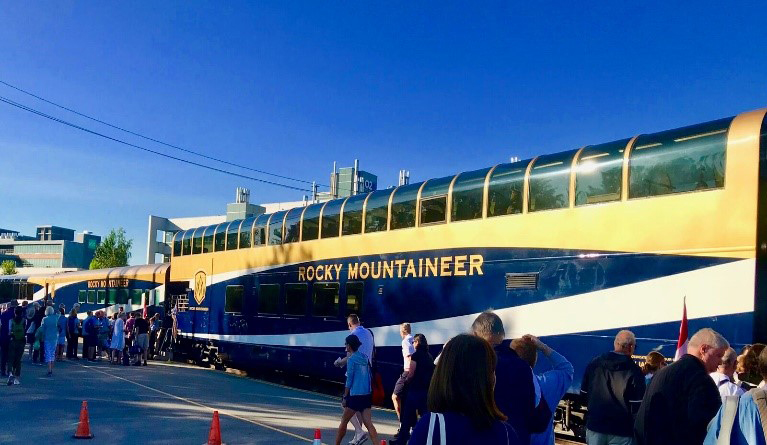
The first day on the train started well as we traveled along the Fraser River, but as we reached the Intermontane belt between the Coastal Range and the Rockies the temperature rose to 99 degrees and the air conditioning failed. The crew did the best they could with fans and cold towels and ice but it made the first afternoon stressful to say the least. Catherine, our guide, read the riot act to the Mountaineer management that night and indeed they were able to fix the car overnight as their maintenance yard is in Kamloops. So, we had both AC and cooler weather for a much more pleasant second day.
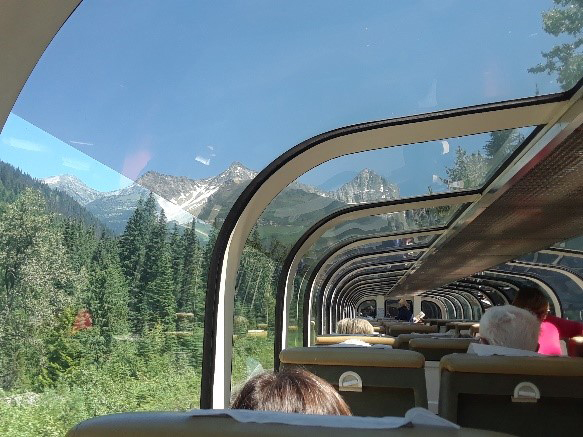
We stayed at the Coast Hotel, a nice mid-market hotel high on the hill above Kamloops. Many of us ordered a particularly good salad of local greens for dinner at Romeo’s, the restaurant in the hotel, and again we went right to bed as we had to board the bus early the next morning to get back to the train.
One vista dome holds over 60 passengers and the dining room can only seat half that many so there were two seatings. Our group of 26 was on the first seating the first day and the second seating the second day. On the second day we were served scones and coffee before breakfast (which ended about noon) and cheese and crackers before lunch service which was not over until about 4 PM. The second day we felt that we were eating constantly and didn’t need dinner.
The first day on the train we saw several bald eagles, osprey and a large number of bighorn sheep including one ram in a classic pose right next to the train. On the second day, the mountain scenery became more and more dramatic along the Columbia River and then the Kicking Horse River. Our train went through a neat set of spiral tunnels that formed a figure eight and gained over 100 feet of altitude in climbing to Kicking Horse Pass and the Continental Divide. This Divide is also the British Columbia/Alberta boundary. 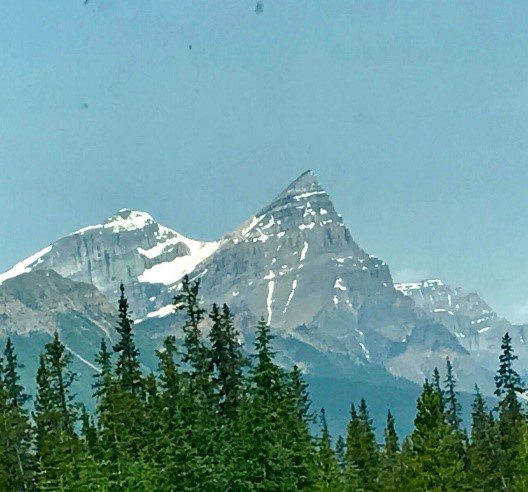 On the far side we followed the Bow River down to Banff. As we passed the Lake Louise train station on the way down we heard that the train station scenes from the movie “Dr. Zhivago” were filmed there, the moving train scenes being filmed on the railway out of Banff toward Calgary. Omar Sharif supposedly stayed in the groundskeeper’s cottage and Julie Christie was in the Penthouse Suite at the Chateau, rather distant accommodations for two actors playing lovers in the movie.
On the far side we followed the Bow River down to Banff. As we passed the Lake Louise train station on the way down we heard that the train station scenes from the movie “Dr. Zhivago” were filmed there, the moving train scenes being filmed on the railway out of Banff toward Calgary. Omar Sharif supposedly stayed in the groundskeeper’s cottage and Julie Christie was in the Penthouse Suite at the Chateau, rather distant accommodations for two actors playing lovers in the movie.
The Canadian Rockies are very dramatic with bare rock showing the sedimentary layers (limestone, which is calcium carbonate and calcium magnesium carbonate [dolomite], sandstone and shale) thrusting thousands of feet above the tree line.
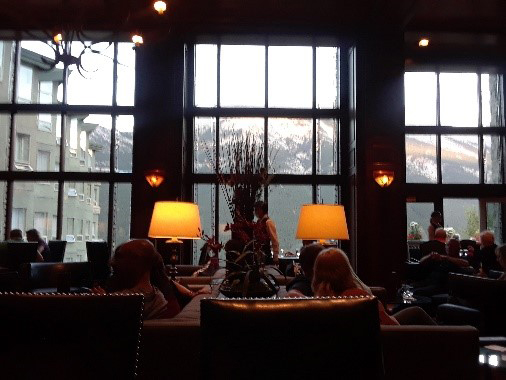
In Banff we stayed at the five-star Rimrock Resort Hotel, situated well above the town on Sulphur Mountain and next to the public hot springs and the gondola. This was an elegant hotel with a very nice spa which, sadly, we had little time to enjoy.
On Wednesday nearly everyone went on the optional Lake Louise excursion to Chateau Lake Louise, a beautiful Fairmont hotel at the end of a wonderful aqua blue glacier lake, and then on to the Lake Louise ski area for lunch and a ride to the top for a breathtaking view. The tour also visited beautiful Moraine Lake. The Rodgers bravely opted for a helicopter tour that they said was very exciting.
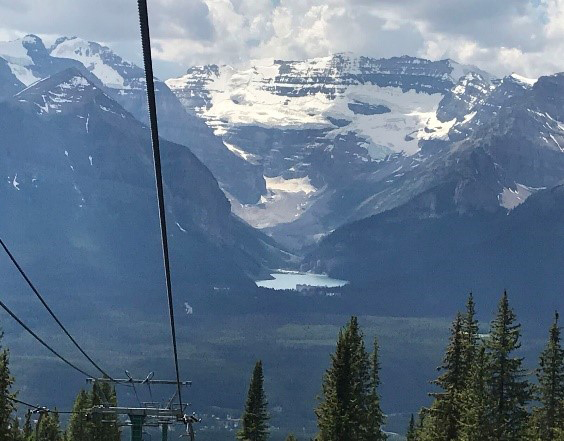
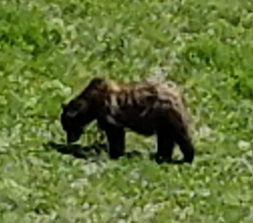
This picture shows Chateau Lake Louise and the lake in the distance. A grizzly bear was spotted from the tow.
The bus returned to Banff in the afternoon and a few of us heard a presentation on ammolite which comes from fossilized ammonites (which died 60 or 70 million years ago) and which shows beautiful thin film interference patterns of striking color. Ammolite is found only in Alberta and makes elegant jewelry.
Dinner was at the Maple Leaf Grille in downtown Banff where we had wonderful sockeye salmon once more, the best of the trip.
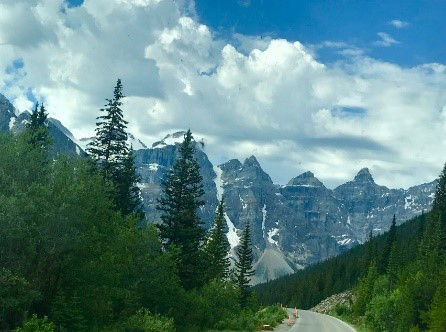
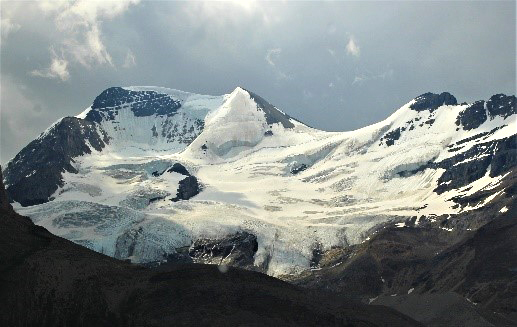
On Thursday, our final tour day, we traveled by bus along the Icefields Parkway to the Columbia Icefields with spectacular mountain views along the way. The Columbia Icefields sit in a bowl created by a ring of peaks. As the ice overflowed into adjacent valleys it created a series of seven glaciers that peaked in extent in 1844 and have been melting ever since.
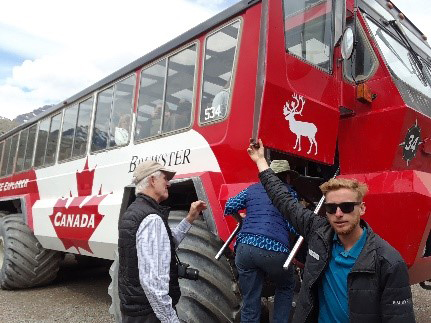
One of those glaciers is the Athabasca where tourists are allowed to get onto the ice. The loss of ice on the Athabasca glacier today is 15 to 20 meters (50 to 70 ft) a year, but there is still a kilometer or two of glacier ice below the Icefield.
Standard tour buses transported us part way up the valley behind the lateral moraine, created before the glacier started to melt, to a parking lot where we changed to an Icefields Explorer, a special purpose bus designed for navigating very steep terrain and ice (at very slow speeds). Driving over the lateral moraine is hair raising and gives one a feeling for how truly immense the glacier was in the past. It is still immense today.
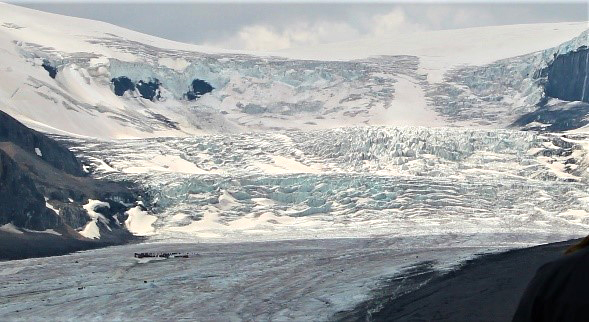
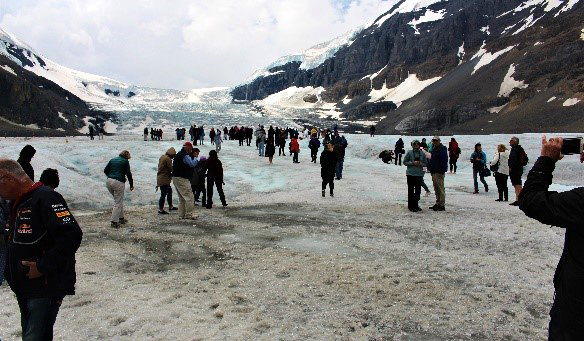
To appreciate the scale in the picture above left, the group of dark spots on the lower glacier ice (lower left in the picture) are multiple explorer buses and tourists out on the ice. The distances are huge and can only be appreciated by being in the middle of the glacier.
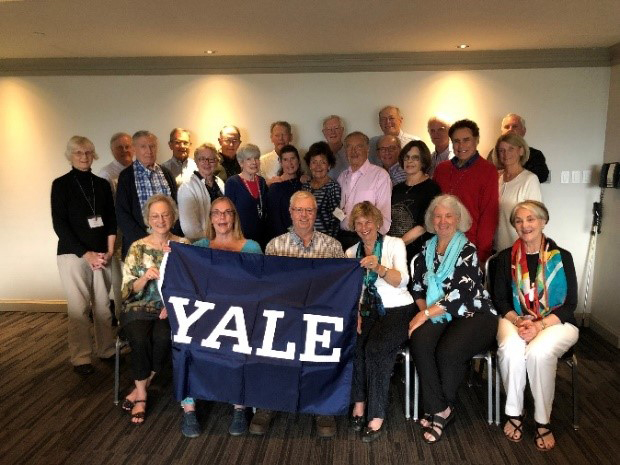
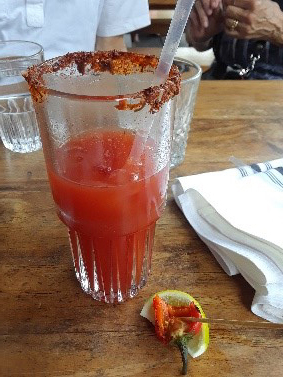
Our bus returned us to Banff for a group photo and a final dinner and on Friday we departed for Calgary and flights home.
A final note: our guide introduced us to Caesars, supposedly the National Drink in Canada, and most of us had at least one by the end of the trip. Like a Bloody Mary but made with Clamato juice, a Caesar is served in a glass rimmed with celery salt and garnished with whatever the bartender puts on a skewer (olives, onions, fruit, sliders…)
The highlight of the trip for all of us was the good company of old and new friends. Also, we enjoyed great scenery, we ate great food, and we saw lots of tourists everywhere. Yale Educational Travel and the Collette Travel Agency did an excellent job in organizing this trip and while we were exhausted by the end, the feedback seems to be that it was all worthwhile.
PICTURE CREDITS: Many thanks to Susan French, Susan Bradford, Bill Manuel and Bam Alling for sending pictures to complement those that we took.

